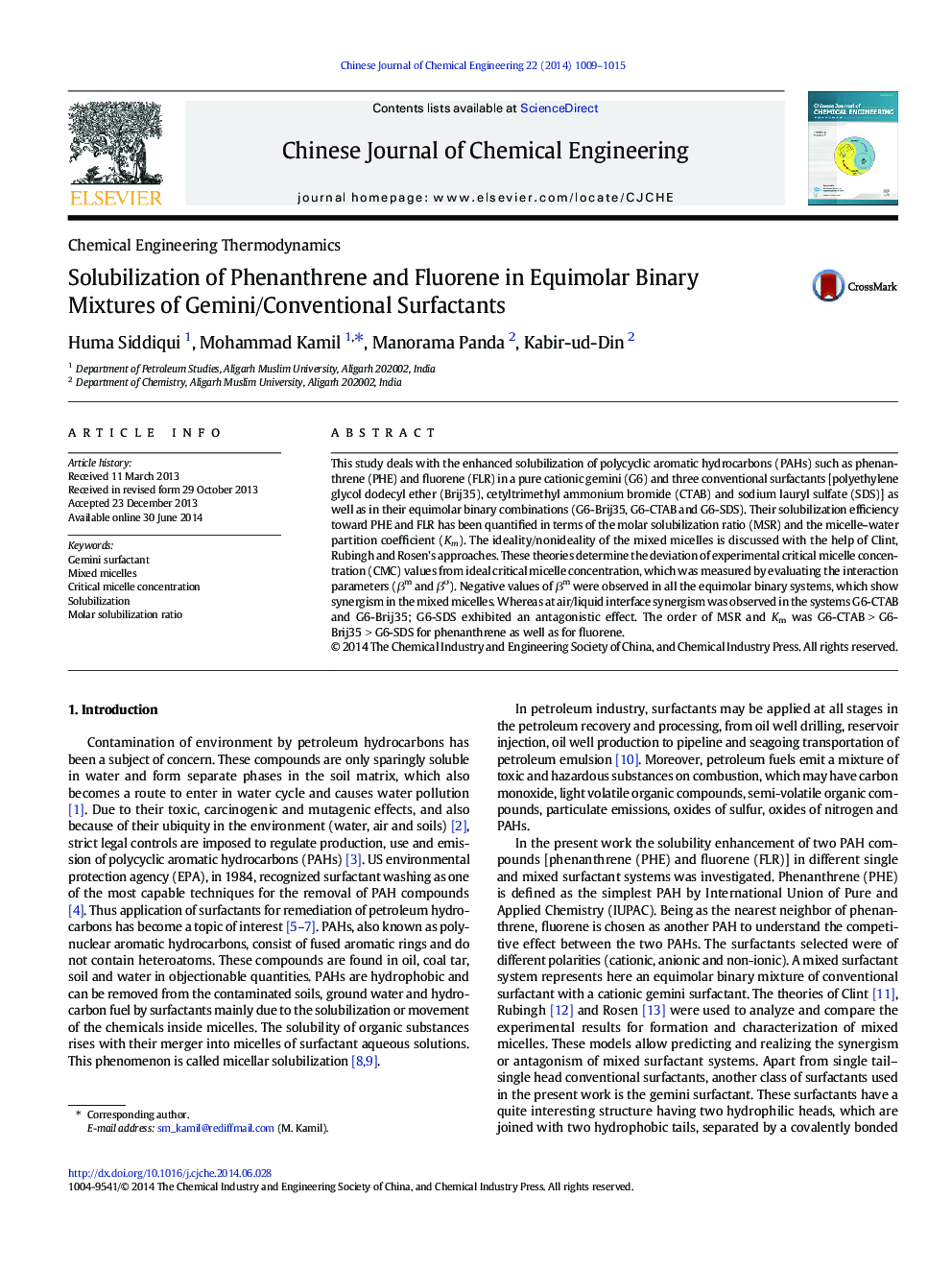| Article ID | Journal | Published Year | Pages | File Type |
|---|---|---|---|---|
| 167224 | Chinese Journal of Chemical Engineering | 2014 | 7 Pages |
This study deals with the enhanced solubilization of polycyclic aromatic hydrocarbons (PAHs) such as phenanthrene (PHE) and fluorene (FLR) in a pure cationic gemini (G6) and three conventional surfactants [polyethylene glycol dodecyl ether (Brij35), cetyltrimethyl ammonium bromide (CTAB) and sodium lauryl sulfate (SDS)] as well as in their equimolar binary combinations (G6-Brij35, G6-CTAB and G6-SDS). Their solubilization efficiency toward PHE and FLR has been quantified in terms of the molar solubilization ratio (MSR) and the micelle–water partition coefficient (Km). The ideality/nonideality of the mixed micelles is discussed with the help of Clint, Rubingh and Rosen's approaches. These theories determine the deviation of experimental critical micelle concentration (CMC) values from ideal critical micelle concentration, which was measured by evaluating the interaction parameters (βm and βσ). Negative values of βm were observed in all the equimolar binary systems, which show synergism in the mixed micelles. Whereas at air/liquid interface synergism was observed in the systems G6-CTAB and G6-Brij35; G6-SDS exhibited an antagonistic effect. The order of MSR and Km was G6-CTAB > G6-Brij35 > G6-SDS for phenanthrene as well as for fluorene.
Graphical abstractPlots of PAH concentration versus gemini (G6) concentration in 1:1 mixtures showing solubilization of PHE and FLR found to be G6-CTAB > G6-Brij35 > G6-SDS.Figure optionsDownload full-size imageDownload as PowerPoint slide
